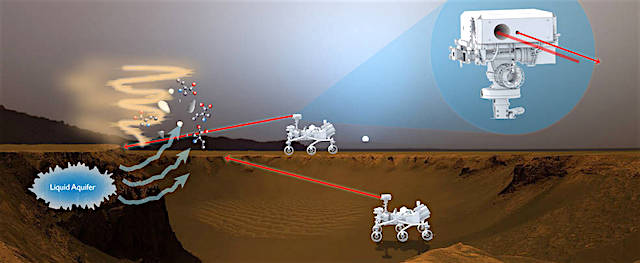 A sensing technique that the U.S. military currently uses to remotely monitor the air to detect potentially life-threatening chemicals, toxins, and pathogens has inspired a new instrument that could “sniff” for life on Mars and other targets in the solar system — the Bio-Indicator Lidar Instrument, or BILI.
A sensing technique that the U.S. military currently uses to remotely monitor the air to detect potentially life-threatening chemicals, toxins, and pathogens has inspired a new instrument that could “sniff” for life on Mars and other targets in the solar system — the Bio-Indicator Lidar Instrument, or BILI.
Branimir Blagojevic, a NASA technologist at the Goddard Space Flight Center in Greenbelt, Maryland, formerly worked for a company that developed the sensor. He has applied the technology to create an instrument prototype, proving in testing that the same remote-sensing technology used to identify bio-hazards in public places also could be effective at detecting organic bio-signatures on Mars.
BILI is a fluorescence-based lidar, a type of remote-sensing instrument similar to radar in principle and operation. Instead of using radio waves, however, lidar instruments use light to detect and ultimately analyze the composition of particles in the atmosphere.
Although NASA has used fluorescence instruments to detect chemicals in Earth’s atmosphere as part of its climate-studies research, the agency so far hasn’t employed the technique in planetary studies. “NASA has never used it before for planetary ground level exploration. If the agency develops it, it will be the first of a kind,” Blagojevic said. [More at link]








